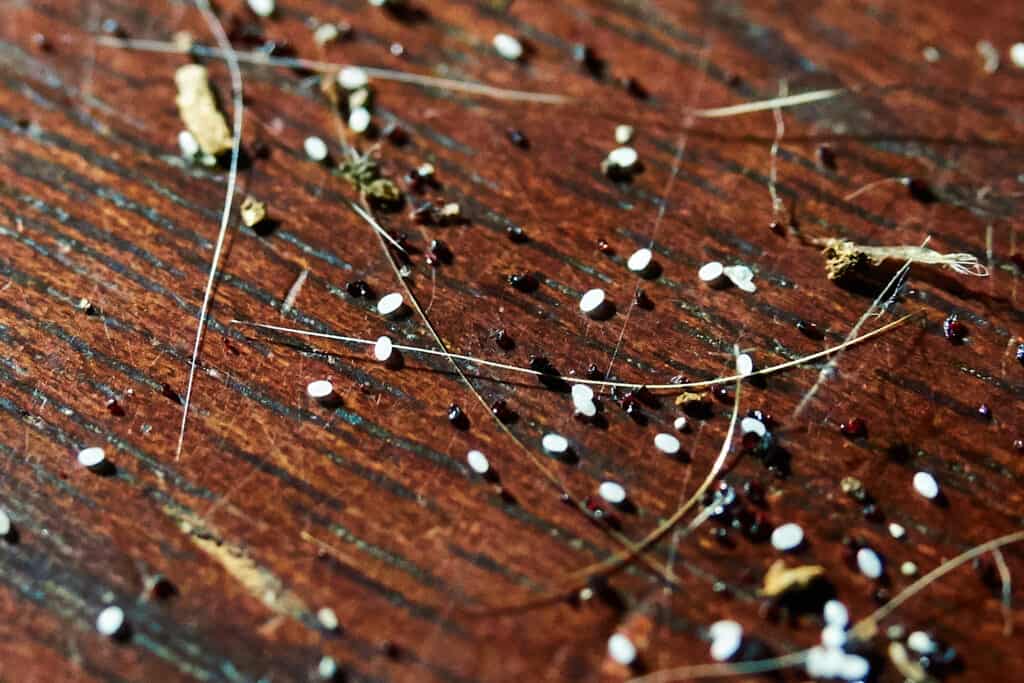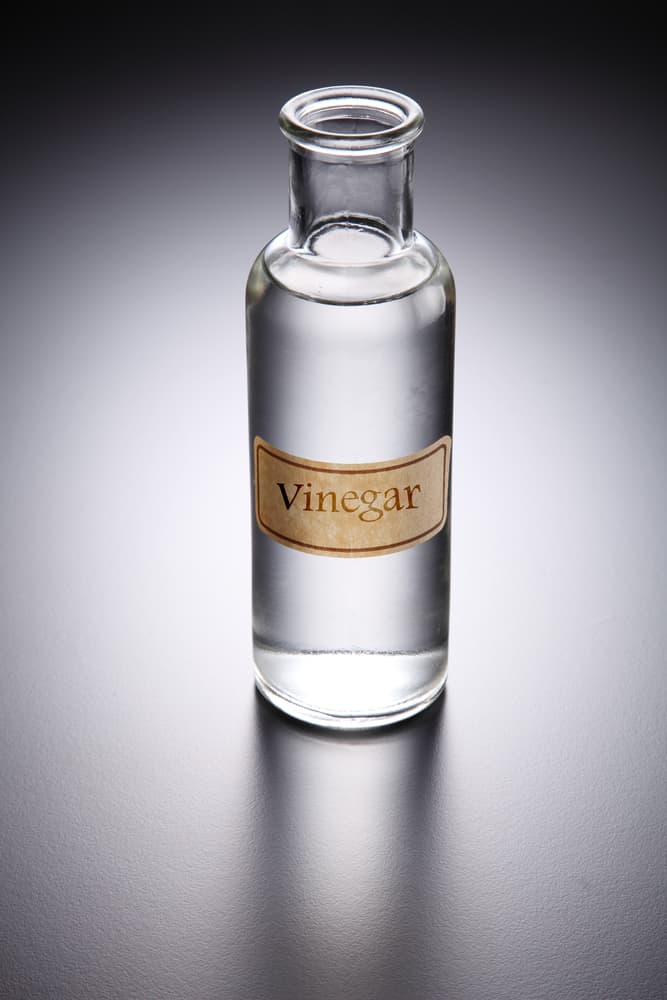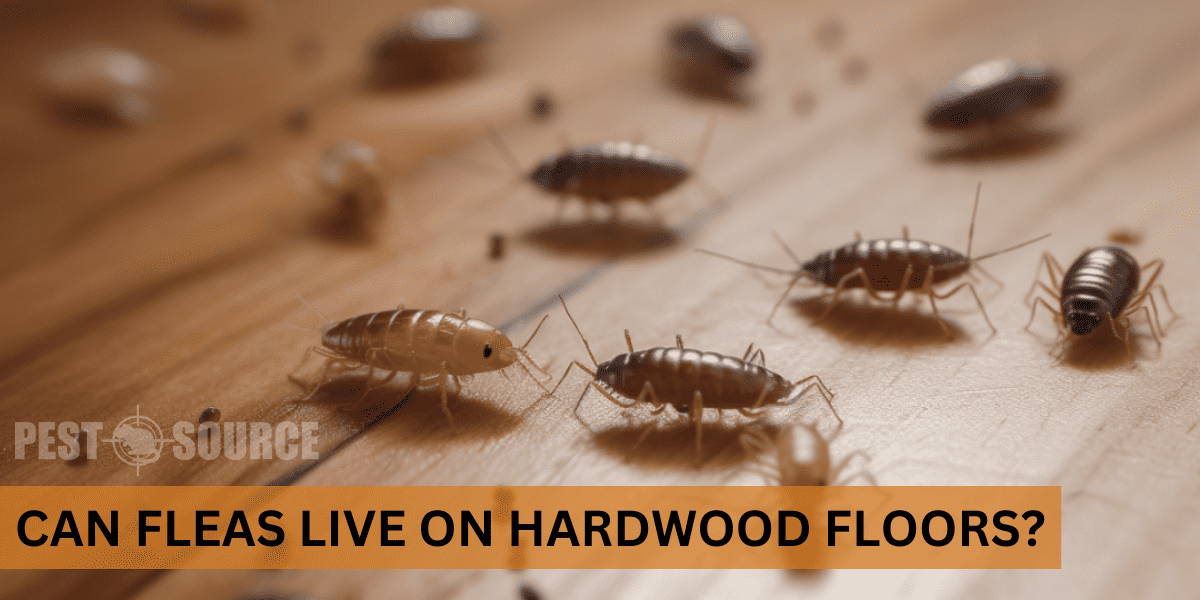Fleas can live on hardwood floors, although they prefer carpeted or upholstered environments. This article will explore how fleas manage to live on hard surfaces and what steps you can take to effectively deal with them, ensuring your home remains flea-free.
Fleas and Hardwood Floors
Understanding the relationship between fleas and hardwood floors is crucial in maintaining a flea-free home. In this section, we’ll discuss their ability to survive on hardwood surfaces and explore the differences between carpet and hardwood flooring in terms of flea infestations.
Can fleas live on hardwood floors?

Yes, fleas can live on hardwood floors. Although they may not find hardwood surfaces as favorable as carpets or rugs, these pesky parasites can still survive and reproduce on them. Fleas are known to be adaptable, and they can make use of the cracks and crevices in hardwood floors to lay their eggs and hide from their host.
How long can fleas survive on hardwood floors?
Fleas can survive on hardwood floors for several weeks to a few months, depending on factors such as temperature, humidity, and availability of food sources. In general, adult fleas can live for about 7-14 days on wood surfaces without a host.
| Life Stage | Survival Time |
|---|---|
| Egg | Up to 10 days |
| Larva | 5-11 days (depending on conditions) |
| Pupa | 7 days to several months |
| Adult | 7-14 days without a host |
Can fleas live in the cracks of hardwood floors?
Yes, fleas can live in the cracks of hardwood floors. These narrow spaces provide the perfect hiding spots for fleas and their eggs, larvae, and pupae. By nesting in the cracks, they can avoid being vacuumed or swept away, giving them a better chance to complete their life cycle and continue infesting your home.
Do fleas prefer carpet over hardwood?

Fleas generally prefer carpeted surfaces over hardwood floors. Carpet fibers provide a more comfortable and secure environment for fleas to thrive, as they can easily hide and lay eggs in the carpet’s fibers. Additionally, carpets tend to accumulate more pet hair, skin cells, and other organic debris, which serve as a food source for flea larvae. However, this doesn’t mean fleas can’t infest hardwood floors. As mentioned earlier, they can adapt to various environments and can still live and reproduce on hardwood surfaces.
How do Fleas Move to Hardwood Floors?
Fleas can find their way onto hardwood floors in several ways, making it important to understand how they move and what attracts them. In this section, we’ll discuss how fleas can transfer from pets to hardwood floors, enter your home on clothing or other items, and the factors that contribute to their presence on hardwood floors.
How do fleas get on hardwood floors?
Fleas can get on hardwood floors by jumping from infested pets, hitching a ride on your clothing or belongings, and even through small gaps in your home’s exterior. They are attracted to the warmth and humidity of your home and will quickly seek out areas where they can find food, such as the fur of your pets.
Can fleas transfer from pets to hardwood floors?
Yes, fleas can transfer from pets to hardwood floors. These tiny pests can jump up to 200 times their body length, making it easy for them to move from your pet’s fur onto the floor. Once there, they may lay eggs, which can quickly lead to a larger infestation.
Can fleas be brought into a house on clothing or other items?
Fleas can indeed be brought into a house on clothing, shoes, or other items. They can latch onto these items when you come into contact with an infested area, such as a park or a friend’s home with a flea problem. Once inside, they can quickly spread throughout your home, including onto hardwood floors.
How to Spot a Flea Infestation on Wood Floors
Detecting a flea infestation on hardwood floors can be challenging, but knowing the signs to look for can help you take action before the problem gets out of hand. In this section, we’ll cover the indicators of a flea infestation, how to spot flea dirt, and tips for identifying live fleas on hardwood floors.
What signs indicate a flea infestation?
To effectively identify a flea infestation on hardwood floors, it’s important to be aware of the key indicators. Here are the primary signs that may signal the presence of fleas in your home:
- Presence of Flea Dirt: Look for tiny black specks or pepper-like granules on hardwood floors, particularly in areas where pets spend a lot of time. This is flea dirt, consisting of digested blood from their hosts.
- Observation of Live Fleas or Larvae: Keep an eye out for live fleas or their larvae on floors, furniture, or in pet bedding. This direct evidence of fleas is a clear sign of infestation.
- Excessive Scratching by Pets: If pets are scratching more than usual, it could indicate discomfort from flea bites, suggesting a flea presence in your home environment.
- Tiny, Dark Specks: Notice any tiny, dark specks on the floor, furniture, or pet bedding? These could be flea eggs or feces, further confirming an infestation.
What is flea dirt and how to spot it on hardwood floors?
Flea dirt is the fecal matter of fleas, which consists of digested blood from their host. It looks like tiny black specks or pepper-like granules and can be found on hardwood floors, especially in areas where your pets spend a lot of time. To confirm if the specks are flea dirt, you can place them on a damp paper towel; if they turn reddish-brown, it is flea dirt.
How to identify live fleas on hardwood floors?
To identify live fleas on hardwood floors, you can try the “white sock test.” Put on a pair of white socks and walk around the infested area, paying close attention to spots where your pets spend time. Fleas will be attracted to the warmth and movement and may jump onto your socks, making them easier to spot against the white background. You can also use a flashlight to scan your floors, as fleas will scurry away from the light.
Methods to Get Rid of Fleas on Wood Floors
Discover effective ways to eliminate fleas from your hardwood floors and keep them away for good. In this section, we will discuss various methods, including mopping, vacuuming, and using home remedies such as salt or boric acid, to help you maintain a flea-free home.
Can regular mopping kill fleas?
Regular mopping alone may not be sufficient to kill fleas, as it might only remove some adult fleas and their eggs. To effectively eliminate fleas from your hardwood floors, you need to use a combination of cleaning methods and products specifically designed to target these pests.
Does mopping with vinegar kill fleas?

Mopping with vinegar can help kill fleas, as the acetic acid in vinegar works as a natural flea repellent. Dilute white vinegar or apple cider vinegar with water and mop your hardwood floors, focusing on areas where you have noticed fleas or their eggs.
How effective is vacuuming in removing fleas from wooden floors?
Vacuuming is an essential step in removing fleas from hardwood floors, as it can effectively eliminate adult fleas, larvae, and eggs. Be sure to use a vacuum with a HEPA filter to prevent flea eggs and larvae from escaping back into the environment and empty the vacuum canister outside after each use.
How to use home remedies such as salt or boric acid to kill fleas on hardwood floors?
Home remedies, such as salt or boric acid, can be effective in killing fleas on hardwood floors. Sprinkle finely ground table salt or boric acid powder on the affected areas, and let it sit for several hours or overnight. Vacuum the treated area thoroughly to remove the dead fleas, larvae, and eggs.
Comprehensive Flea Control for Houses with Hardwood Floors
Ensure complete flea control in your home by targeting not just your hardwood floors, but also furniture, baseboard and other hard surfaces. In this section, we will explore effective methods to prevent infestations, maintain a clean environment, and consider professional flea control options for homes with hardwood floors.
How to get rid of fleas on furniture and other hard surfaces?
Eliminating fleas from furniture and other hard surfaces requires a multifaceted approach to ensure your living space remains flea-free. Follow these steps to effectively target and remove fleas:
- Vacuum Thoroughly: Regularly vacuum furniture, floors, and any hard surfaces to remove adult fleas, eggs, and larvae. Pay special attention to cracks, crevices, and hidden areas where fleas might hide.
- Use Flea-Specific Sprays or Powders: Apply flea-specific sprays or powders according to the manufacturer’s directions. These products are designed to target fleas at different life stages.
- Wash Bedding in Hot Water: Launder all pet bedding, throw pillows, and blankets in hot water to kill fleas and their eggs. High temperatures during washing and drying are effective in eliminating flea infestations.
- Consider a Steam Cleaner: Use a steam cleaner on upholstery, rugs, and carpets. The steam’s heat can penetrate deep into fabrics and kill fleas, larvae, and eggs on contact.
How to prevent fleas from infesting your hardwood floors?
Prevent fleas from infesting your hardwood floors by maintaining a clean environment, vacuuming regularly, and using flea repellent products. Keep your pets on a flea prevention program prescribed by a veterinarian, and address any outdoor flea sources by treating your yard and keeping wild animals away.
What professional flea control methods can be used in homes with hardwood floors?
Professional flea control methods for homes with hardwood floors may include targeted treatments, such as insect growth regulators and residual insecticides. A pest control expert can assess your specific situation, recommend the most effective course of action, and provide guidance on how to prevent future infestations.
Fleas on Other Types of Floors
In this section, we will discuss how fleas can survive on various flooring types, such as tile, laminate, concrete, and carpet, and how to effectively control and prevent flea infestations on these surfaces.
| Flooring Type | Survival Rate | Control Tips |
|---|---|---|
| Tile | Low | Regular cleaning and use of insecticides in grout lines |
| Laminate | Moderate | Seal cracks and use flea control products as necessary |
| Concrete | High in damp areas | Keep dry, clean, and well-ventilated; apply appropriate insecticides |
| Carpet | Very High | Vacuum regularly, steam clean, and use flea treatments |
Can fleas live on tile or laminate flooring?
Fleas can indeed live on tile and laminate flooring, although they may find it more challenging compared to softer surfaces like carpets. Tile and laminate floors are smooth and hard, which makes it difficult for fleas to move around and lay their eggs. A study published in Journal of economic entomology titled “Distribution and control of cat fleas in homes in Southern California (Siphonaptera: Pulicidae)” founds that fleas were collected more frequently from rooms with carpeted or wooden floors than from those with tile.
However, fleas can still find refuge in the cracks or crevices of these floors, so it’s crucial to keep these areas clean and treat them with appropriate pest control products.
Can fleas survive on concrete floors?
Yes, fleas can survive on concrete floors, particularly in damp and humid areas like basements or garages. The porous nature of concrete provides a suitable environment for flea larvae to develop. To control flea infestations on concrete floors, it’s essential to keep the area dry, clean, and well-ventilated, and use appropriate insecticides or flea control solutions.
Can fleas survive on carpet?
Carpeted floors provide an ideal environment for fleas, as they offer warmth, shelter, and easy access to their hosts. Flea eggs, larvae, and pupae can hide deep within carpet fibers, making it difficult to eliminate them completely. To control fleas on carpets, regular vacuuming is crucial, as well as using steam cleaning and applying flea control products like insect growth regulators and adulticides.



